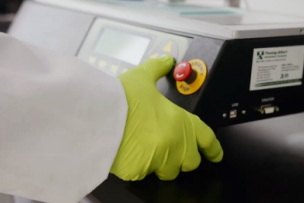As anyone who’s ever worn a Halloween mask knows, you don’t keep face coverings on very long when they’re uncomfortable. The same holds true even when the coverings are workplace safety equipment like reusable respirators, despite the much higher stakes.
Which is a driving factor behind the continuous upgrades in respirators at St. Paul, Minnesota-based 3M, the manufacturer that produced the first reusable “Maintenance-Free” Half Facepiece Respirator in 1977.
During the past 50 years or so, 3M has added filter cartridges with a “swept-back” design that enabled better peripheral vision, a “bayonet-style” connection, nonwoven filters that enabled easier breathing, a full facepiece and a quick latch that simplified lowering and raising the respirator for workers moving back and forth between contaminated areas and safe spaces.
A pivotal innovation came with the introduction of the Cool Flow valve in 2002, which more readily allowed the release of exhaled breath from the respirator.
When Discomfort Means Dysfunction
3M’s latest model, the Secure ClickTM half facepiece respirator introduced in February, employs a quad-flow system, with two dual-flow cartridges on each respirator that create four airflow paths.
Component connection is also simpler, working just like a vehicle seat belt: Users can be sure they’ve added filters and cartridges to the facepiece correctly because doing so generates an audible click.
“We’ve come a really long way,” says Jackson Hornbeak, a former safety sales specialist who works in the marketing unit of 3M’s personal safety division.
Ensuring workplace respirators are worn correctly and function properly is critical for employers, who are required by the U.S. Occupational Safety and Health Administration, the nation’s top workplace safety regulator, to provide the gear for workers exposed to harmful dusts, fumes, sprays or gases.
Manufacturers were fined $888,654 last year for violations of that rule, OSHA Standard 1910.134, accounting for nearly a quarter of the fines imposed across all American industries.
“If it’s not sealing properly, if it’s not fitting the way it’s supposed to, it’s not going to give the respirator the chance to do its job and protect wearers from the hazards that are in the environment,” Hornbeak says.
Comfort may be even more crucial than fit, Hornbeak says, because users need to keep the respirators on.
“If the wearer needs to have it on for eight hours but it’s not comfortable, or their face starts hurting, then they may take it off,” he adds. “If they’re not wearing it properly or not wearing it at all, they’re not going to get any of the benefits and protection it offers.”
Read More: PPE Selection: Find the Right Type of Respirator
The Secure ClickTM HF-800 Half Facepiece helps increase comfort by adding a silicone faceseal and a flex-joint nose bridge, 3M says. Offering a wide field of view, it’s compatible with some welding and grinding shields, the company notes.
Next Generation of Respiratory Protection
A key feature allows seal checks—which wearers must perform before each use of a respirator to comply with OSHA regulations—to be performed much more simply.
Before the Secure Click™ HF-800, users conducted a negative-pressure check by covering the filters with their hands and attempting to breathe in. If the facepiece collapsed slightly, they knew the gear had been donned correctly.





Talk to Us!
Leave a reply
Your email address will not be published. Required fields are marked *